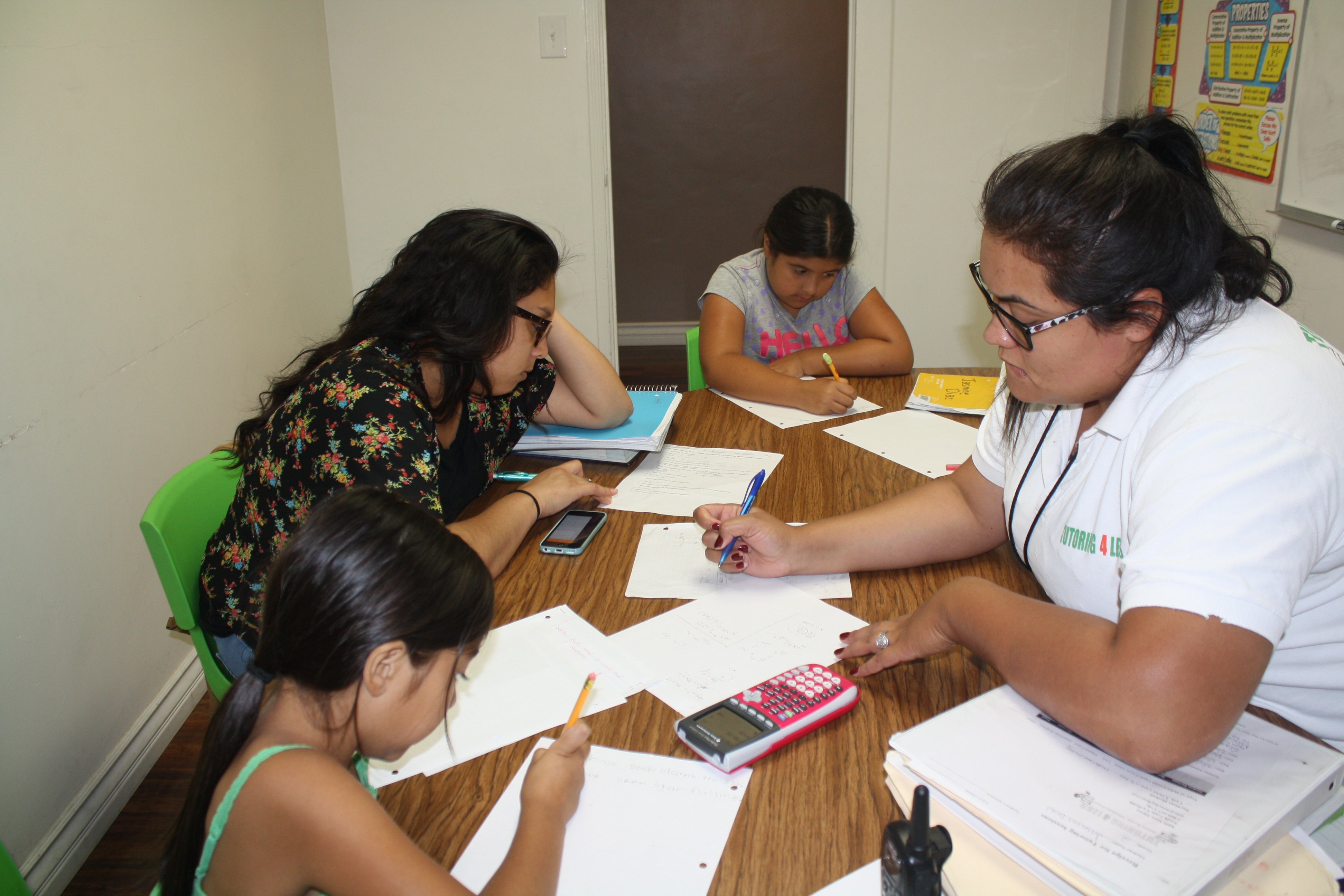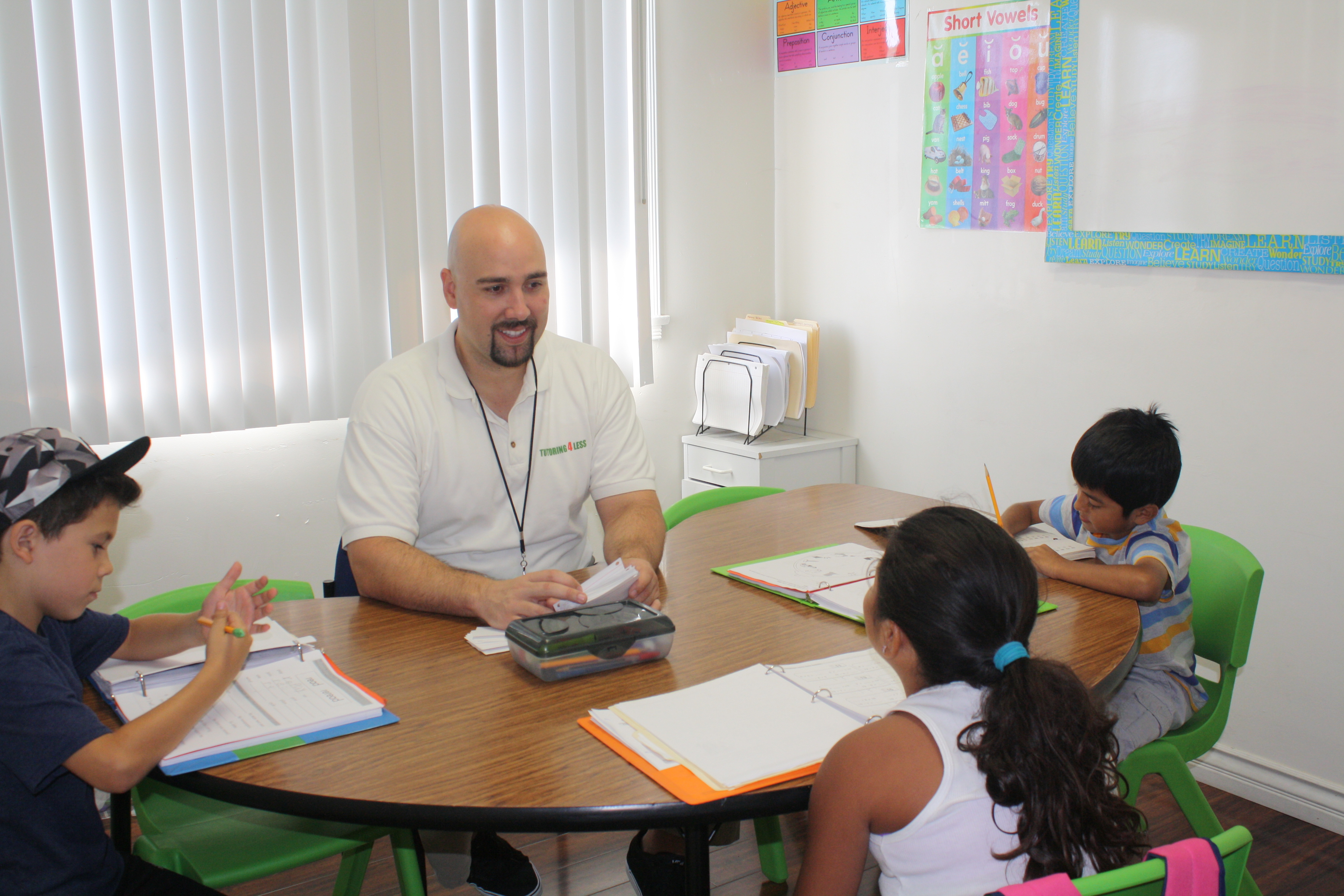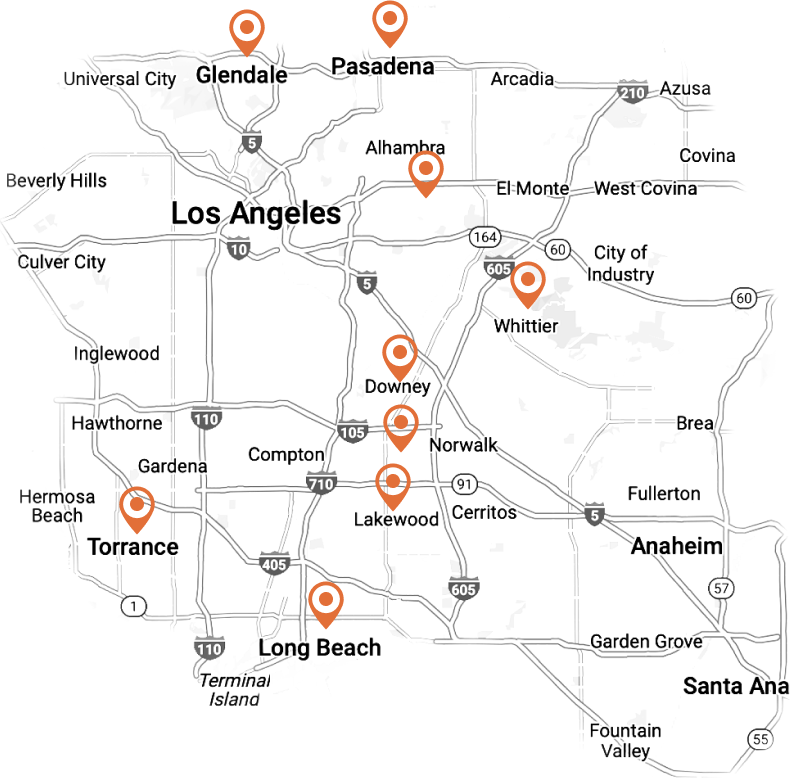Tutoring4less
Elementary School Math Tutoring for Young Students
At Tutoring4Less, we understand the foundational importance of math education for elementary-aged students. Our math tutoring program is designed to foster a deep understanding and love for math, ensuring that young learners build the skills and confidence needed to succeed academically and beyond.
It’s well-documented that many elementary-aged students struggle with math. In fact, studies show that nearly 60% of students in this age group find math challenging. This difficulty can stem from a variety of factors, including abstract concepts, a fast-paced curriculum, and a lack of foundational skills. Our program is specifically designed to tackle these challenges head-on, providing the support and resources needed to transform math from a source of frustration to a subject of confidence.

Top Elementary Math Tutors in Los Angeles
We aim to challenge all of our students by requiring them to use higher-order thinking to make connections between elementary math concepts and real world applications. We help our students develop the ability to apply the processes of mathematics in everyday life and to acquire a positive attitude towards math. In this way, we aid students in developing the math skills that will serve them well not just in their 4th grade math class, but as students of all ages.

Does Tutoring Help Elementary School Students?
Elementary Math Overview
- Number Sense: Number sense refers to a general understanding of number and operations. It focuses on the ability to develop useful strategies for solving problems. Students are expected to understand the relationships amongst numbers and make connections in different ways to represent them. They learn how to count in various ways and develop an understanding of the four basic operations (adding, subtracting, multiplying and dividing). Number sense also influences effective computing skills.
- Measurement: The ability to understand measurements directly connects to the world in which we live. Many of these concepts are also directly connected to other subject areas such as science, social studies, architecture, and engineering. By studying the math of measurements students learn about different objects, their standard units, and the measuring tools and processes involved in measuring quantities such as density, length, area, volume, mass, temperature, and capacity. They will learn about and use the standard units (kilograms, liters, and meters) to calculate the magnitude of different objects. They also deal with measurements of time and rate. Students also learn about the important relationships between a variety of shapes and figures, and how to calculate the perimeters, areas, volumes, surface area, and circumference of those shapes.
- Geometry and Spatial Sense: Spatial sense is the intuitive awareness of one’s surroundings and the objects in them. Geometry helps us represent and describe objects and their correlation to space and time. A strong sense of spatial relationships also reinforces a students understanding of numbers and measurement. Spatial sense is necessary for understanding and appreciating the many geometric aspects of our world. Insights and intuitions about the characteristics of two-dimensional shapes and three-dimensional figures, the interrelationships of shapes, and the effects of changes to shapes are important aspects of spatial sense. Students develop their spatial sense by visualizing, drawing, and comparing shapes and figures in various positions. Mathematical concepts and skills related to location and movement are also addressed in this area of study.
- Patterning and Algebra: One of the central themes in elementary mathematics is the study of patterns and relationships. This area not only requires students to recognize, describe, and generalize patterns, it requires them to build mathematical models to discern observable patterns in the real world. Elementary students identify patterns in shapes, designs, and movements, as well as in sets of numbers. They study both repeating patterns as well as growing and shrinking patterns and develop ways to extend them. Students also use graphs, tables, and verbal descriptions to represent relationships that generate patterns. Through activities and investigations students examine how patterns change in order to develop an understanding of variables as changing quantities. In the intermediate grades, students represent patterns algebraically and use these representations to make predictions. A second focus of this subject area is on the concept of equality. Students look at different ways of using numbers to represent equal quantities. Variables are introduced as “unknowns”, and techniques for solving equations are developed. Problem solving provides students with opportunities to develop their ability to make generalizations and to deepen their understanding of the relationship between patterning and algebra.
- Data Management and Probability: The ability to understand and interpret data is essential in today’s technological society. This section focuses on teaching students to organize data, make sense of variables and patterns, and judge the logical validity of any claims and interpretations made. Even elementary students are expected to count objects and communicate their findings with charts and graphs. Students should be able to collect, display, and interpret data to answer specific questions. They must also construct and analyze arguments that involve data and its illustration. All students need to understand the role probability plays in data collection and decision-making.
Basic Arithmetic
- Addition and Subtraction: Understanding and mastering the basics of addition and subtraction, including single-digit and multi-digit problems, and strategies for carrying and borrowing.
- Multiplication and Division: Learning multiplication tables, basic division, and the relationship between multiplication and division. Understanding concepts like groups and sharing.
Number Sense
- Counting and Number Patterns: Developing skills in counting by ones, twos, fives, tens, and recognizing number patterns. Understanding even and odd numbers.
- Place Value: Grasping the concept of place value, recognizing the value of digits in different places, and learning to read and write large numbers.
- Comparing and Ordering Numbers: Learning to compare and order numbers, including using symbols for greater than, less than, and equal to.
Fractions and Decimals
- Understanding Fractions: Introduction to fractions, identifying and comparing fractions, understanding numerator and denominator, and recognizing fractions as parts of a whole.
- Basic Operations with Fractions: Adding and subtracting simple fractions with like denominators.
- Decimals: Introduction to decimals, understanding place value for tenths and hundredths, and basic operations with decimals.
Geometry
- Shapes and Properties: Identifying and describing basic geometric shapes such as squares, rectangles, circles, and triangles. Understanding properties like sides, vertices, and angles.
- Perimeter and Area: Learning to calculate the perimeter and area of simple shapes, understanding units of measurement, and solving related word problems.
- Symmetry: Recognizing lines of symmetry in different shapes and objects.
Measurement
- Units of Measurement: Learning about different units of measurement for length, weight, and volume, including both customary and metric units.
- Telling Time: Reading analog and digital clocks, understanding hours and minutes, and solving time-related problems.
- Money: Identifying coins and bills, counting money, making change, and solving money-related word problems.
Data and Graphs
Collecting and Organizing Data: Learning how to collect data through surveys and experiments, and organizing it into charts and tables.
Interpreting Graphs: Reading and interpreting bar graphs, line graphs, and pictographs to understand data.
Simple Probability: Basic concepts of probability, such as likely, unlikely, certain, and impossible events.
Popular Elementary Topics Our Math Tutors Can Teach
What Our Clients Say
Testimonials from Students and Families

